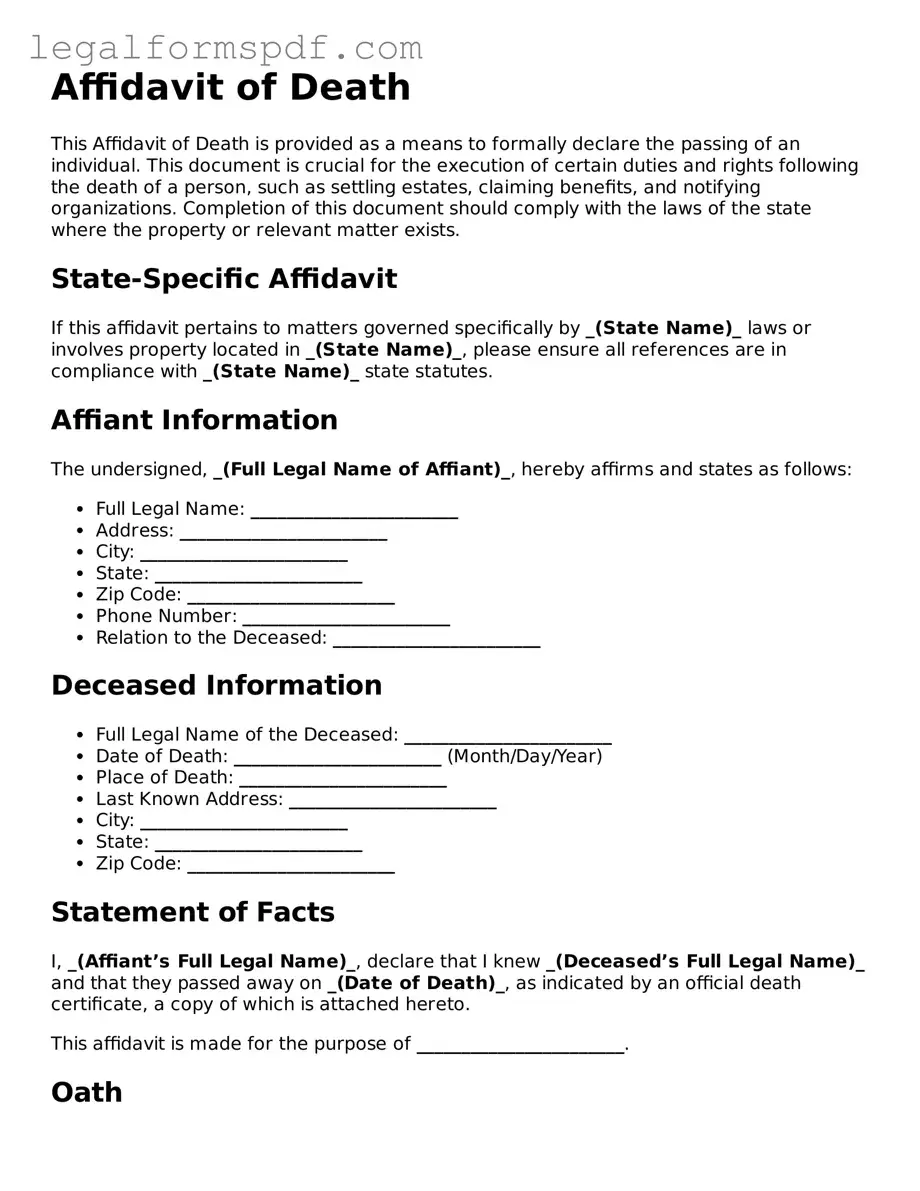Affidavit of Death
This Affidavit of Death is provided as a means to formally declare the passing of an individual. This document is crucial for the execution of certain duties and rights following the death of a person, such as settling estates, claiming benefits, and notifying organizations. Completion of this document should comply with the laws of the state where the property or relevant matter exists.
State-Specific Affidavit
If this affidavit pertains to matters governed specifically by _(State Name)_ laws or involves property located in _(State Name)_, please ensure all references are in compliance with _(State Name)_ state statutes.
Affiant Information
The undersigned, _(Full Legal Name of Affiant)_, hereby affirms and states as follows:
- Full Legal Name: _______________________
- Address: _______________________
- City: _______________________
- State: _______________________
- Zip Code: _______________________
- Phone Number: _______________________
- Relation to the Deceased: _______________________
Deceased Information
- Full Legal Name of the Deceased: _______________________
- Date of Death: _______________________ (Month/Day/Year)
- Place of Death: _______________________
- Last Known Address: _______________________
- City: _______________________
- State: _______________________
- Zip Code: _______________________
Statement of Facts
I, _(Affiant’s Full Legal Name)_, declare that I knew _(Deceased’s Full Legal Name)_ and that they passed away on _(Date of Death)_, as indicated by an official death certificate, a copy of which is attached hereto.
This affidavit is made for the purpose of _______________________.
Oath
I swear, under penalty of perjury, that the information provided in this affidavit is true and correct to the best of my knowledge.
Executed this ____ day of ____________, 20____.
Affiant's Signature
__________________________________
Subscribed and sworn to (or affirmed) before me this ____ day of ____________, 20____, by _______________________, proved to me on the basis of satisfactory evidence to be the person(s) who appeared before me.
Notary Public
Signature: __________________________________
Name (Printed): _______________________
Commission Number: _______________________
My Commission Expires: _______________________
